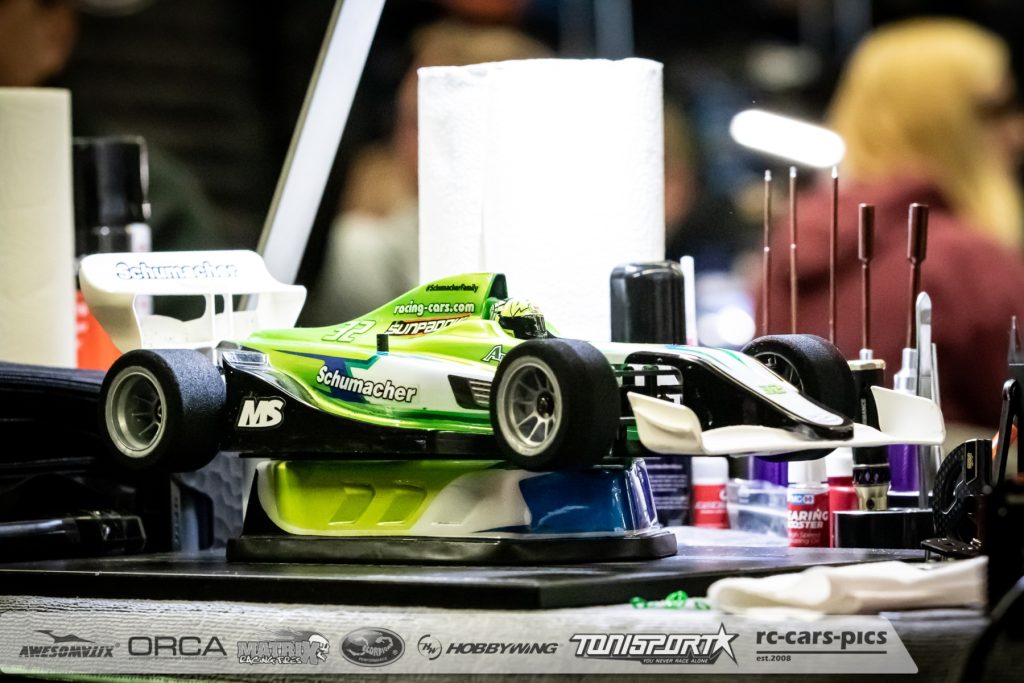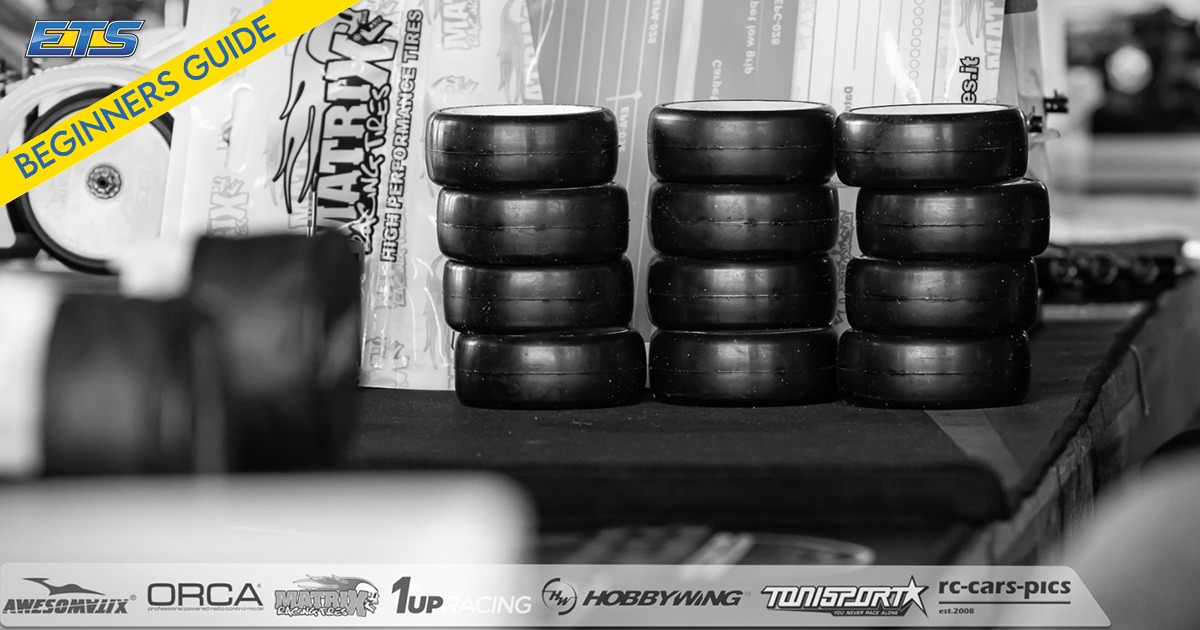In the third episode of our ETS Beginners Guide we will inform you about the racing tires of the Euro Touring Series, and what to do (and not to do) with them during the event!
First, you should make yourself one thing clear again: The tires are the only part of you race car which is in contact with the surface of the racetrack. Tires are probably the most important thing in racing – but their importance gets shifted aside very often. Drivers are caring a lot about many other things when working on their car setups, but the tires are having one of the biggest impact most of the time!
People are investing a lot of time (and money) in buying option parts, titanium screws, tungsten weights, flex bumpers…. But they are practicing with old tires all the time! If you really want to make a step forward with your racing, you should care more about practicing with better (and new) tires from time to time. The car reacts completely different compared to old tires and you need to practice that “feeling for new tires”!
Patrick Beck (DE) ToniSport

Handout tires for everybody
But let`s go some steps backwards. At the Euro Touring Series, every racer gets one set of race tires which is included in the entry fee. Depending on the racing class, drivers can buy an additional second or third set of tires as well. All sets of tires are marked with a number, which is clearly assigned to a driver. Racers are only allowed to use the sets of tires which they picked up for themselves – sharing tires with others is not allowed to keep the chances equal for everybody. All race tires can get used with the start of the timed (seeding) practice. Before seeding practice, every participant can use as many (or fewer) own tires for all rounds of free practice as he wants.
Pro Tipp: You can practice with the tires you have in your box. There is no need to use a new set in every round of free practice. For sure, you will see the top drivers doing this when they are fighting for the win at an ETS weekend. But when you are doing your first or second ETS race and you just want to have a good time with your friends, there is no need to use a crazy amount of tires in practice!
The handout tire system is working great at almost every big electric 1:10 scale onroad race and is a major puzzle piece behind the success of the Euro Touring Series since it`s early days. For sure, it is a lot of work for Jutta Treder and Marlo Prümper (who are always at the ETS, caring about tires and motors) to mark and control all these tires, but the limited amount of allowed tire sets is very important to keep the costs for the racers somehow under control. Another positive aspect of the handout tires is the possibility to give tires from the same batch of production to all racers!
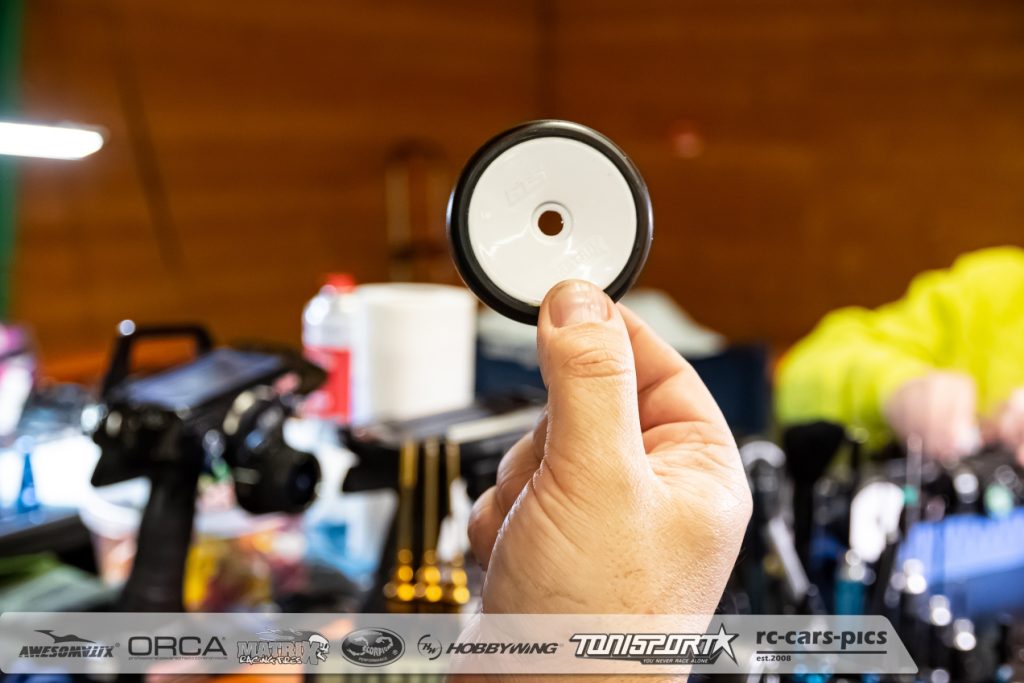
Additive for the best performing tire on track
The fact that tire additive increases the tires (and cars) performance on track is nothing new. Tire additive is a chemical substance, which gets applied to the tire surface before each run. The additive makes the tire more sticky which results in more overall grip on track, especially in the first laps of the race. So if you have ever asked yourself “Do I really need additive? Does it makes sense?”, there is only ons simple answer: YES!
During free practice, you can use your own additive and also your own break cleaner to clean the tires between the runs. When the official race starts on Friday, the Euro Touring Series provides special additive tables where everybody needy to go to “sauce” the tires. You will only find the ETS additive (MR33 V3 or MR33 V4) there, and you must use it. The same is for the break cleaner. The ETS crew is putting Würth brake cleaner on all pit tables and nothing else is allowed to use. Easy and transparent rules for eerybody!
Pro Tipp: Practice at your home track and use the ETS tire additive when preparing for it. There are so many additives out there and as they are really different, it makes no sense to practice like hell for an TS race with a different tire sauce!

Do tire warmers make sense?
Next clear answer: YES 🙂 Tire warmers are very important when it comes to outdoor racing in the touring car and FWD class. Drivers are saucing their tires, and put their tire warmers on with a tissue between tire and warming cap. The tire warmers are staying on the tire for 10-20 minutes at 60-75° degrees, and it is not just about to “warm up the tire”. It is more about creating the best temperature in the tire while the additive is on. This generates an even more grippy tire surface befire the run and everybody is using these warmers during the outdoor season. At indoor races, they are not neccesary and we do not see them at any time on pit tables!
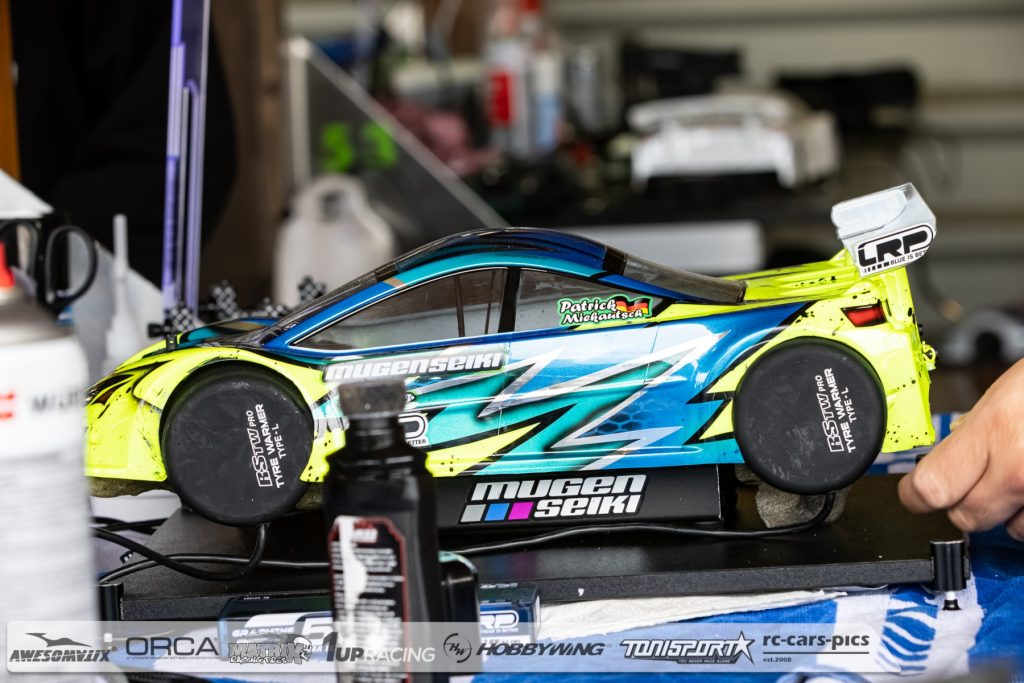
How to prepare a set of rubber tires for the race?
When it comes to tire preperation, every driver has kind of his own way to do it. When running in a touring car, or in the FWD class, it is allowed to remove the center line of the tire with a cutter (not with sanding it down on a tire sander as seen on the picture below). Removing the center line is the only modification of the rubber which is allowed to do.
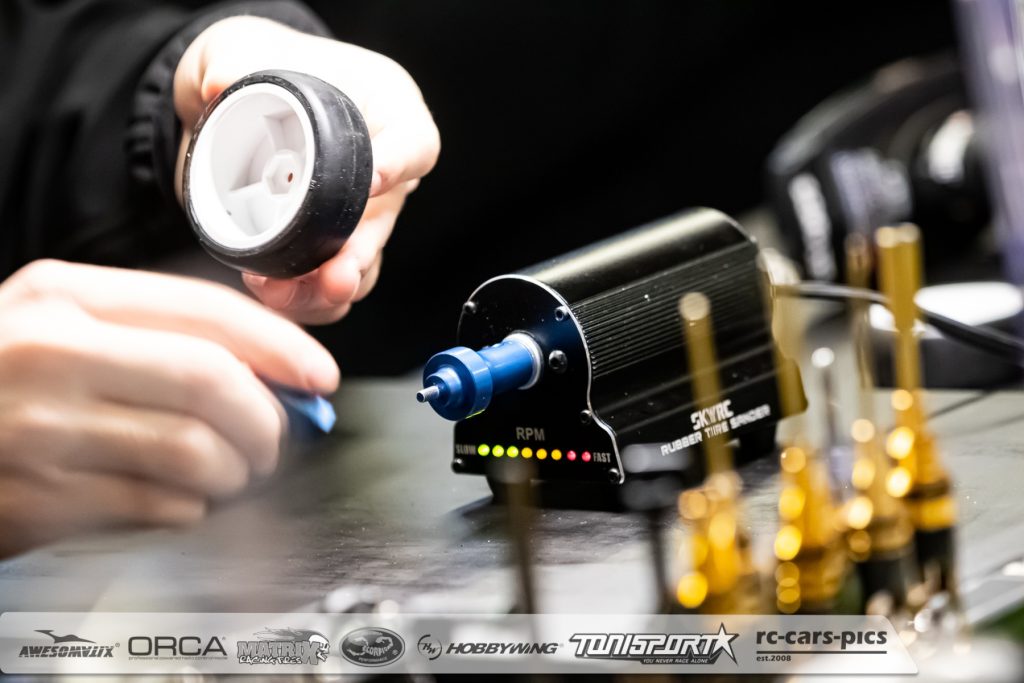
But there is way more you can do with your rubber tires. Here we have listed some tipps for you:
- Check that every tire is perfectly glued onto the rim.
- Check that no glue is on the contact surface of the tire.
- Put every tire on a fine digital scale and write down the weight (into the wheel).
- Use the heavier tires in front, the lighter ones in the rear.
- Mark every tire with the position you like to mount them onto the car. FR = Front Right, RL = Rear Left, and so on…
- Use a tire roller (available from MR33 and Boom RC) or a different tool, and roll your tires forwards and backwards on your setup board .(with pressure from above) to let hard glueing spots “crack” ad to increase the air gap between tire and foam insert.
- Clean your tire properly with brake cleaner and put them back into the a plastic bag until you need them.
- Make sure that you mount them properly on our car.
- Keep in mind to go to the additive table on time to use the additive for the right amount of time (mostly between 10 and 15 minutes).
- Another fact to keep in mind is the time you want to use the tire warmers (outdoor racing) after you have applied the additive.
- We recommend to set the temperature of your tire warmers to a value between 60 and 75 degrees.
- Clean and check your tires after every run.
- On some tracks (especially outdoors) it makes sense to change the tires from left to right and backwards after every run.
As we already said: This is just a basic guideline of things you can do. Find a way that works fine for you and which feels good, and stick with it. You can ask all the others around you and you will learn a lot of great and also silly things for sure 🙂
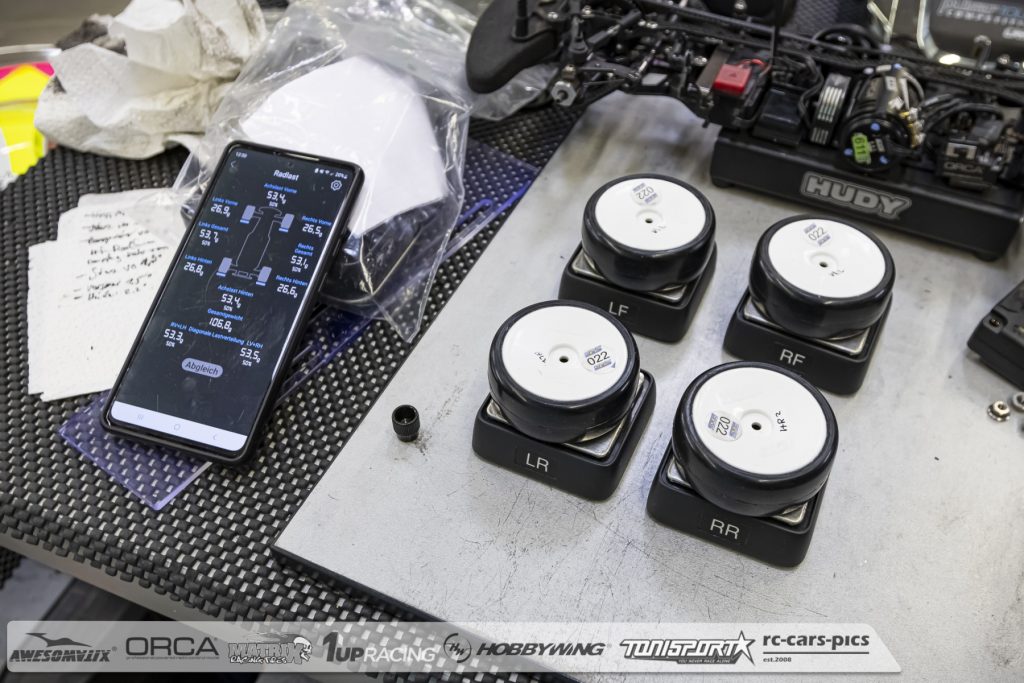
How to prepare and handle F1 foam tires
The Formula tires at the ETS are different from all the others as we are using foam tires. They are ready to use out of the package and there is no need to put them on a tire truer to sand them down (like in 1:12 scale pan car racing). Basically, you just need to mount them onto your car, applying tire additive, and you are ready to go.
But as there are also some secrets about foam tires (which our ETS reporter does not know) we have some tipps from IFMAR World Cup winner and reigning ETS champion Andreas Stiebler (Austria) for you:
So outdoors I change the tyres from left to right after every battery. Also on the front axle, so that the camber is constantly on the tyres and the handling in left and right-hand bends remains the same.
Andreas Stiebler (AT) Schumacher
This is not absolutely necessary indoors, as tyre wear is virtually non-existent.
What you should not forget with the foam tyres is that the rollout changes with heavy tyre wear on the rear axle and with the diameter of the contact tyres it can be said that for every 1mm smaller diameter you have to translate one tooth longer in gearing at 64dp.
For example, if you are training with used tyres that have a diameter of 59mm and you change to racing tyres with a diameter of 61mm, you have to reduce the gear ratio by two teeth to keep the same rollout.
Indoors, a glued sidewall is almost always necessary with the grip that the ETS has and this should also be cleaned with brake cleaner after every run, otherwise the edge becomes sticky and builds up grip again.
Driving with solid axle has also proven to be the best choice since the indoor foam rubber tyres and outdoor I use a gear diff all the time.
As far as additives are concerned, it is important that the tyres are dry when you go out on the track.
I usually sauce the rear tyres longer than the front, e.g. 20 minutes at the rear to 10 minutes at the front.
Especially indoors, I always sauce the full tread at the front and not, for example, the inner half, as I have the feeling that the unlubricated part of the tyre becomes more clogged than the lubricated part. I prefer to only sauce the front of the tyre very briefly but over the entire surface.
I use masking tape to clean the tyres. I bought one of the cheapest ones on Amazon in a pack of 5, but the reviews said that the adhesive strength could be better. 😅 You shouldn’t use armoured tape like this as it sticks far too well, I speak from experience.
